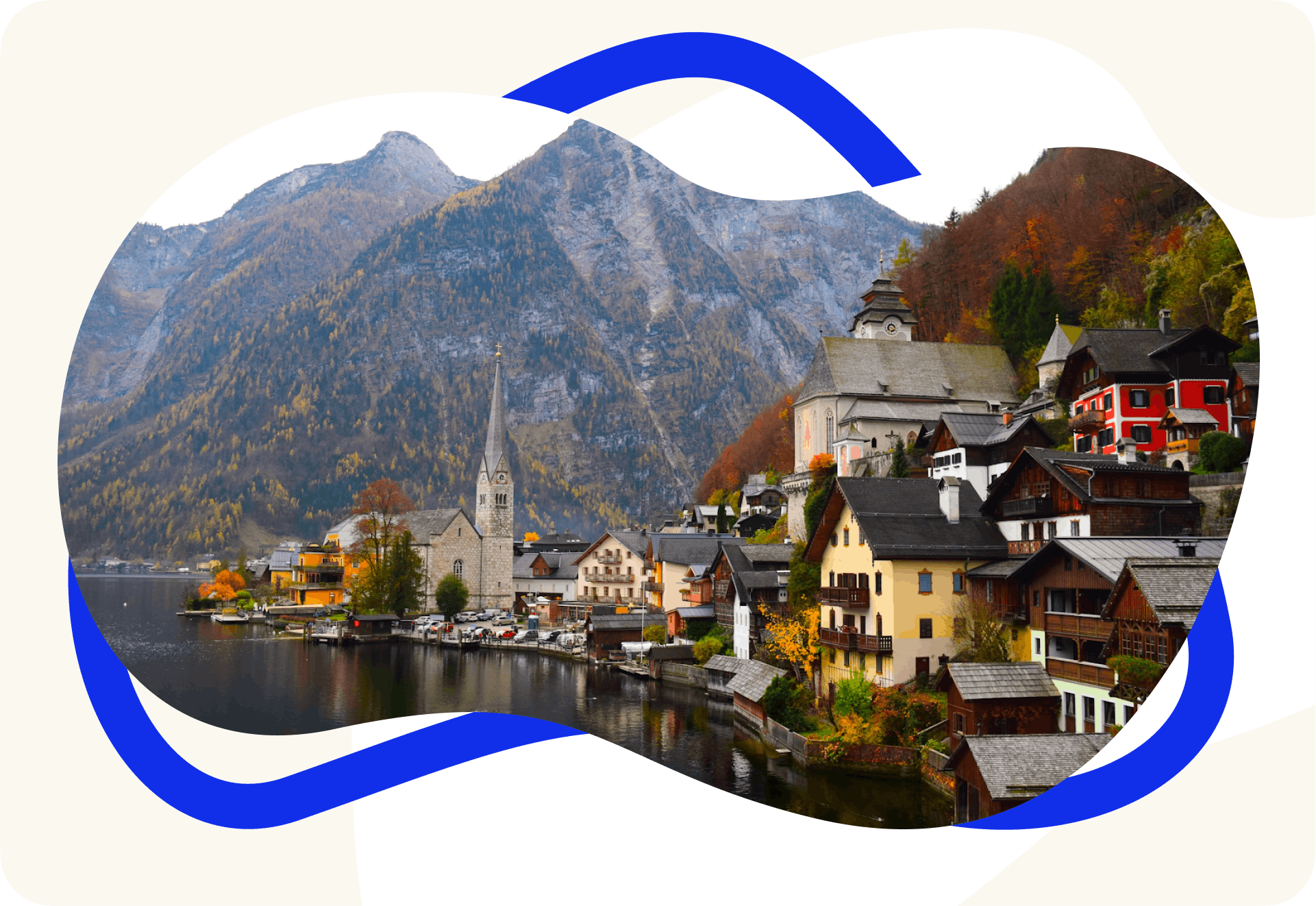The world is more connected than ever before. With the tap of a finger, we can video chat with friends and family across the globe or book plane tickets to far-off destinations. But despite massive technological advances, legal and bureaucratic barriers still make international travel across much of the world difficult. Enter the Schengen countries: a European travel zone allowing passport-free movement across most of the continent.
What is the Schengen Area?
The Schengen Area is a zone of 29 European countries that have jointly agreed to abolish internal border checks. Once inside, you can travel freely between member states without passing through immigration control or showing your passport. It's named after the small town of Schengen in Luxembourg, where the foundational 1985 Schengen Agreement was signed before eventually expanding to include most of mainland Europe.
Over 400 million citizens across the EU and affiliated nations now enjoy seamless travel through the Schengen Area. It connects cultures across continents while fueling economic growth and development. But how did this borderless territory come to be?
Origins of the Schengen Agreement
Previously, travel between European countries was hindered by border checks causing long lines and wait times. With the formation of the European Union well underway, member states sought greater unity and freedom of movement across national boundaries.
The 1985 Schengen Agreement between Belgium, France, Luxembourg, Netherlands, and West Germany initially eliminated internal land border controls. This allowed people to freely cross between participating countries without passports or visas. It also called for a common policy for handling external borders and visitors from non-EU states.
Over the following decades, more European nations joined the Schengen Area by meeting membership requirements and implementing needed legislation and regulations. It was incorporated into EU law in the 1990s. Today, the Schengen Area encompasses over 400 million residents across 29 member countries who can travel, study, and conduct business hassle-free.
Which countries are the 29 Schengen members?
The 29 members making up the Schengen Area today are:
- Austria
- Belgium
- Bulgaria
- Croatia
- Czech Republic
- Denmark
- Estonia
- Finland
- France
- Germany
- Greece
- Hungary
- Iceland
- Italy
- Latvia
- Liechtenstein
- Lithuania
- Luxembourg
- Malta
- Netherlands
- Norway
- Poland
- Portugal
- Romania
- Slovakia
- Slovenia
- Spain
- Sweden
- Switzerland
Of these, Iceland, Norway, Switzerland, and Liechtenstein are not members of the EU but participate in Schengen cooperatively. Meanwhile, EU states Cyprus and Ireland are not yet part of the Schengen Area. Bulgaria and Romania have officially become members of the Schengen Area from March 31, 2024.
Let's explore some Schengen country highlights:
- Austria: Known for its stunning Alpine scenery, world-class skiing, and culturally-rich cities like Salzburg and Vienna.
- Belgium: The headquarters of the European Union featuring a fine dining scene, medieval towns, and first-rate art and design scenes in cities like Brussels, Bruges, and Antwerp.
- Croatia: Over 1,000 Adriatic Sea islands along with the walled city of Dubrovnik and the scenic Plitvice Lakes national park.
- Czech Republic: Architectural gems like Prague Castle and the historic center of Český Krumlov, plus beer-brewing tradition.
- Denmark: Lovely coastal landscapes, alternative communities in Copenhagen, the Danish Riviera, and Hans Christian Andersen's hometown Odense.
- Norway: Features majestic fjords along the Atlantic coastline and the stunning Northern Lights visible on clear winter nights. Norway also governs the remote Arctic archipelago of Svalbard. Located well north of the Arctic Circle, polar bears call Svalbard home.
What are the benefits of the Schengen Agreement?
By removing internal borders, the Schengen member countries created a range of benefits for citizens and travelers, including:
Free movement of people
Over 400 million European residents can freely work, study, or reside in any Schengen country without additional visas, making travel across the area much more convenient.
Reduced border control
As there is no need for border checks for people moving between Schengen Area countries, there has been a reduction in border control and the associated costs for member countries. Citizens and visitors also only experience border control at their first point of entry into the area.
Economic advantages
Businesses within the zone experience reduced red tape while shipping goods and services across national divides. Harmonized external visa policies also facilitate increased tourism and foreign investment. From 2013 to 2015 alone, the elimination of internal border controls generated an extra €110 billion for member economies.
Enhanced security
Although Schengen states lack internal border checks, police authorities still collaborate by sharing criminal databases to strengthen external security and mitigate risks from open borders. States also retain the ability to temporarily reinstate internal border checks for events threatening public policy or national security, which helps to ensure that the Schengen zone remains safe for its citizens and visitors.
Whether residing in bustling urban hubs like Paris, quainter cities such as Brno, Czechia, or little mountain towns in Austria, life in the Schengen Area offers free movement through participating countries.* This allows for flexibility to live in one location and easily visit friends or family, or take a vacation in nearby Schengen countries without border hassles, because the Schengen area does not perform internal border checks.* The open borders invite you to make the most of Europe's many cultures, languages, and opportunities as they flow seamlessly together within Schengen member countries.
*See sections Valid Travel Documents and Schengen Visas.
Residents in the Schengen area who are EU Citizens can also work freely in any EU country that is also in the Schengen area. Schengen area residents who are not EU Citizens can also often pursue employment opportunities in other Schengen countries as long as they have the relevant work permits, for example the EU Blue Card.
For example:
A marketing manager who is a German citizen can readily accept a temporary assignment coordinating with regional teams stationed out of their company's satellite office in Milan, Italy all within their residency rights. This temporary work assignment is allowed because Germany is part of the Schengen region and is a EU member state.
In this instance, the employer must:
- Be a registered limited liability company, OR
- Be incorporated in Italy
The employer must also:
- Supply an employment agreement to the German employee**
- Ensure compliant payroll processing**
**The employment agreement and the company’s payroll processing must adhere to Italian law.
An architect based out of Rotterdam could also visit construction project sites in Belgium as needed without passports or immigration checkpoints, thanks to Schengen area freedom of movement.
Further reading: SCHENGEN: Your gateway to free movement in Europe
Valid travel documents
Although residents of Schengen countries enjoy visa-free internal travel, visitors from non-EU countries need proper documentation like a passport, Schengen Visa, and possibly other permits based on nationality and trip details. Validity period and length-of-stay rules also apply depending on your country of origin.
Schengen visas
If required, visitors can obtain a visa which allows short visa stays of up to 90 days within a 180-day period across all member countries. Visas allow coordinated travel on a single document rather than applying separately for each state.
- Evaluate Schengen visa eligibility.
- Determine the type of Schengen visa you need.
- Learn where to apply.
- Book your appointment.
- Fill out the Schengen visa application form.
- Gather your documents.
- Attend your visa interview.
- Pay the fee.
- Wait for your visa decision.
U.S. citizens are not required to have a Schengen visa when traveling for short stays (90 days or less), but from 2025, myst have an ETIAS registration.
Schengen countries ushered in the era of borderless European travel we know today, dissolving barriers for commerce, tourism, migration, and more. Over 30 years hence, the agreement still facilitates tremendous socioeconomic opportunities across Europe for residents and visitors alike. Although current political climates and security threats occasionally institute temporary border checks, the Schengen Area remains committed to upholding travel freedoms for all those within its bounds.
Hire Who You Want, Live Where You Want — You can with Localyze
At Localyze, we're on a mission to help 100 million people immigrate across borders. To do this, we're reimagining how people move for work by bringing together seamless technology, transparency, and unrivaled service. We believe in a world where companies can hire from everywhere — and people can live and work where they want.
Need help navigating the immigration process when hiring non-EU talent to Schengen countries? Our team of experts is here to help. Book a free demo!



